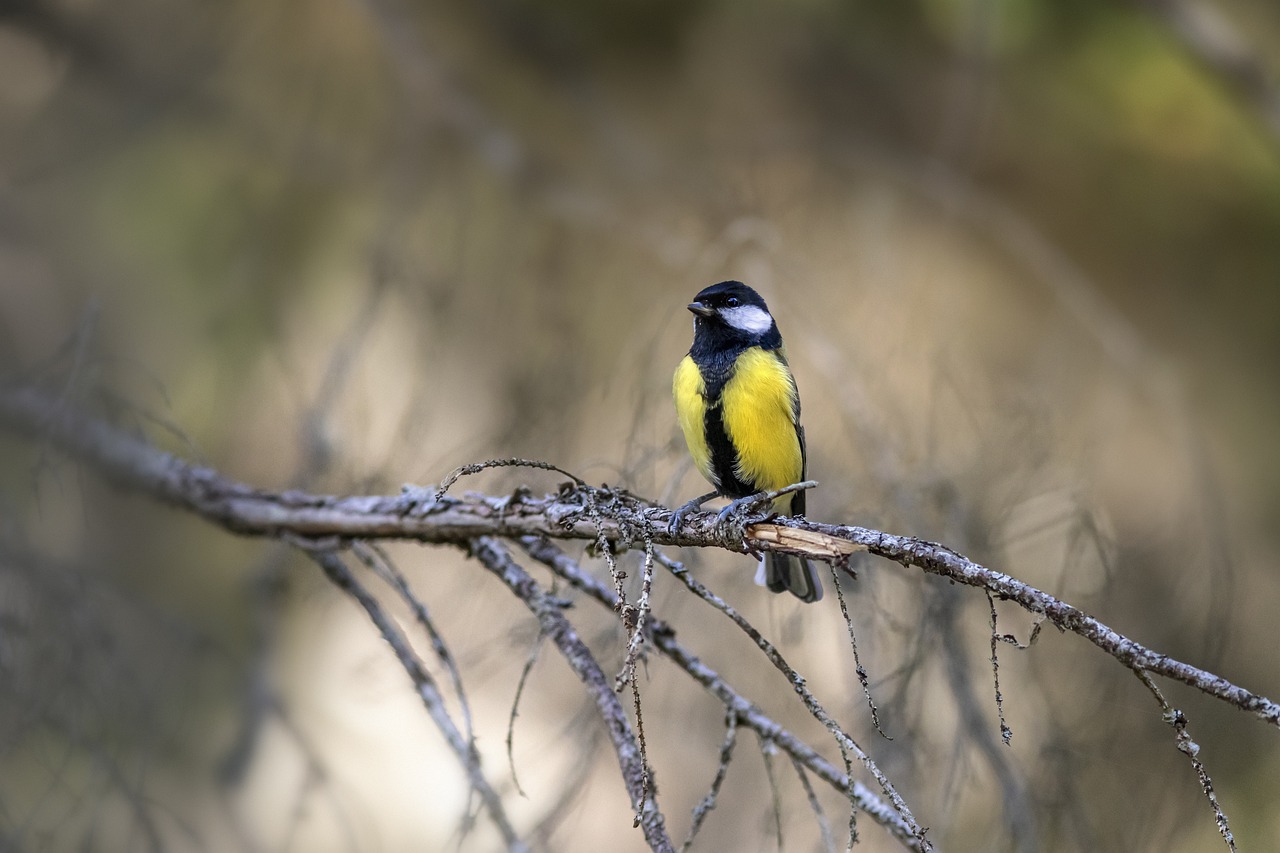The Great Tit (Parus major) is one of the most common and recognizable songbirds across Europe and parts of Asia. Known for its bold plumage, loud calls, and adaptability, it is a favorite among birdwatchers and frequently seen in gardens, woodlands, and parks.
Physical Description
- Size:
- Length: 12–14 cm (4.7–5.5 inches).
- Wingspan: 22–25 cm (8.7–9.8 inches).
- Weight: 16–22 grams (0.6–0.8 ounces).
- Plumage:
- Head: Black with a glossy sheen, white cheeks, and a black bib.
- Upperparts: Olive-green back with a bluish-gray tail and wings.
- Underparts: Bright yellow with a central black stripe (more prominent in males).
- Sexual Dimorphism: Males have a broader and more defined black stripe than females.
- Bill: Short, strong, and pointed, ideal for its omnivorous diet.
Behavior
- Vocalization:
- Highly vocal, with a wide repertoire of calls and songs, often described as “teacher-teacher.”
- Social Structure:
- Often seen in pairs or small family groups; joins mixed-species flocks in winter.
- Territoriality:
- Highly territorial during the breeding season, defending their nests aggressively.
Habitat
- Found in a variety of habitats, including:
- Deciduous and mixed woodlands.
- Urban parks and gardens.
- Hedgerows and orchards.
- Thrives in areas with trees and shrubs for nesting and foraging.
Diet
- Omnivorous, with seasonal variation:
- Spring and Summer: Primarily insects, caterpillars, and other invertebrates, which are essential for feeding their young.
- Autumn and Winter: Seeds, berries, and nuts, supplemented by food from bird feeders.
Breeding
- Nesting:
- Typically nests in tree holes, nest boxes, or crevices in buildings.
- Lined with moss, feathers, and animal hair.
- Clutch Size:
- Lays 6–12 eggs, which are white with reddish-brown speckles.
- Incubation:
- Female incubates the eggs for about 13–15 days.
- Fledging:
- Chicks leave the nest after 16–22 days, remaining dependent on parents for a short period.
Distribution
- Widespread across Europe, North Africa, and much of Asia, extending to Japan and Southeast Asia.
- Present year-round as a resident species but may make short-distance movements in harsh winters.
Conservation Status
- Classified as Least Concern by the IUCN due to its wide range and stable population.
- Benefits from human activities, such as bird feeding and nest box installations.
Ecological Role
- Insect Control: Plays a vital role in controlling pest populations during the breeding season.
- Seed Dispersal: Helps disperse seeds, contributing to vegetation growth.
Interesting Facts
- Problem-Solver: Known for its intelligence, the Great Tit can solve puzzles and has been observed opening milk bottle tops to access cream.
- Regional Dialects: Songs and calls vary regionally, showcasing unique “dialects.”
- Adaptability: Thrives in urban environments and can quickly adapt to changing conditions.
Summary
The Great Tit (Parus major) is a resilient and charismatic bird that thrives across diverse landscapes. Its bold personality, vibrant appearance, and importance in the ecosystem make it a beloved species in its range. Whether flitting through woodlands or visiting backyard feeders, the Great Tit is a delightful and essential presence in nature.
Visited 830 times, 23 visit(s) today
Views: 1209
Subscribe to the newsletter:
